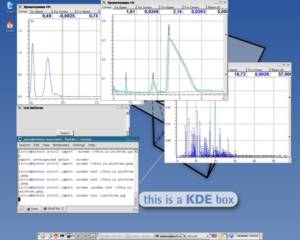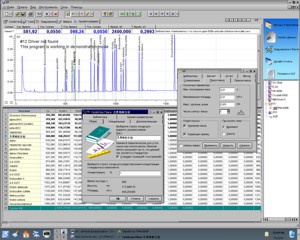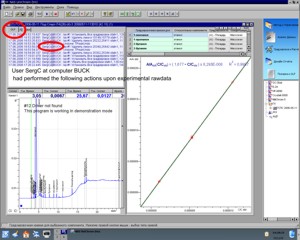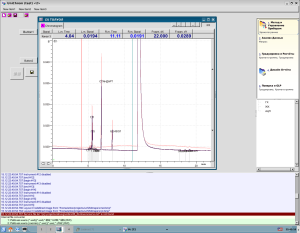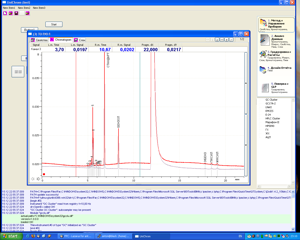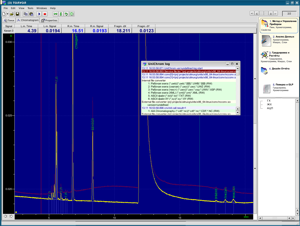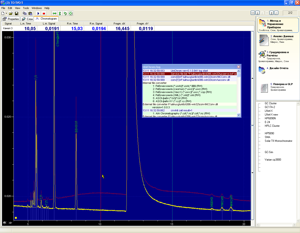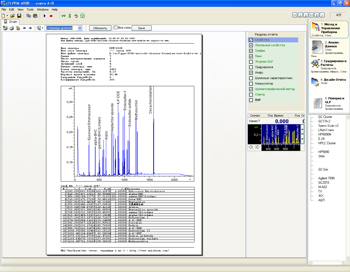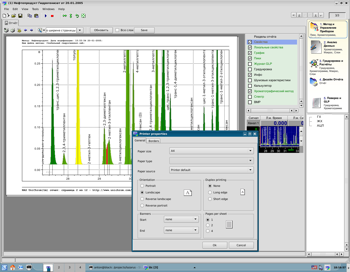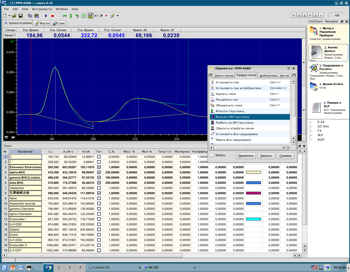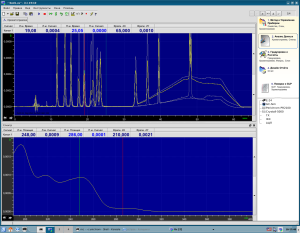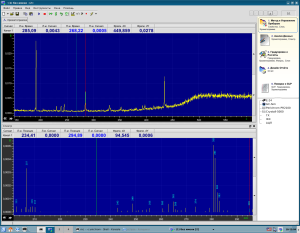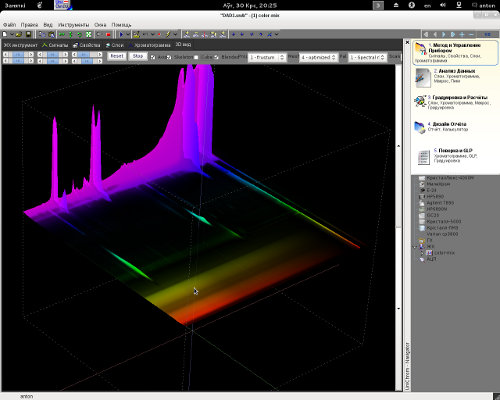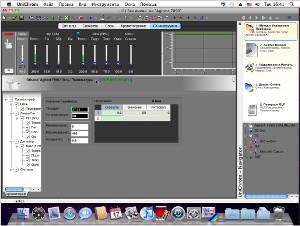|
UniChrom tm
- GC / LC Linux SOLUTION
|
is fully automated Chromatographic Data System, dedicated to simplify hard, routine work of Chemist, dealing in a field of Gas and Liquid Chromatography. |
||||||||||||||
|
This page is dedicated entirely UniChrom for Linux development. The new generation UniChrom V, due to its architecture allows separate form development and new mechanism of events delivery. So it made possible project migration to Kylix /QT without re-engineering the projects. Currently the project reached Beta stage. The installation now can be Downloaded. Screenshots of UniChrom for Linux in chronological order
|
|||||||||||||||
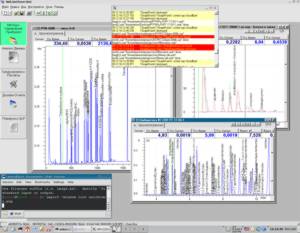 December 12, 2005The second screenshot. UniChrom V basics are visible: task switcher at the left. In the top-left corner of each MDI window there is Layer navigator. The coloured window above others - the built-in console for app/driver debug and other info messages. UniChrom duplicates its own STDOUT to this window EnvironmentFavourite GNU / Debian
Linux 3.1 (Sarge) Current status
Problems
|
|||||||||||||||
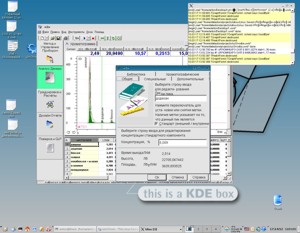
March 10, Just before AnalyticaExpo-2006.The third screenshoot. The Peak table is nearly done and peak information window ready. Chromatogram shows lots of chromatogram layers. Peak contour is filled with green colour. EnvironmentAs was before. |
|||||||||||||||
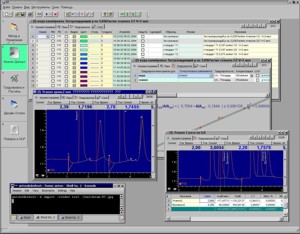
July 13, 2006 - 32 deg C outside.The 4-th screenshoot. Most of the forms accurately redesigned with new powerful unicode grid control. EnvironmentVirtual machine - HighlightsAIA/NetCDF (ANDI Chromatography) file converter successfully ported to GCC. This file converter would be included with sources in UniChrom DDK. UniChrom 4 Linux reads and writes AIA files. HP Chemstation file converter ported to linux. GC control form not fully ported but successfully receives updates from REAL GC "Crystall-5000" Calibration table successfully ported. All control and graphs are in-place, See the calibration curve for relative response of water in ethanol. (Analysis sample can be found in Solutions) Relative response factor is the first coefficient of equation, seen on the graph. GLP log is working. :oE - Nobody would hide the changes of experimental data. |
|||||||||||||||
|
|||||||||||||||
December 5, 2006 - UniChrom V for Linux testcaseEnvironmentVirtual machine Debian GNU/Linux 4.0 (Etch)-
The page layout with three different views: GLP log, Chromatogram, Calibration |
|||||||||||||||
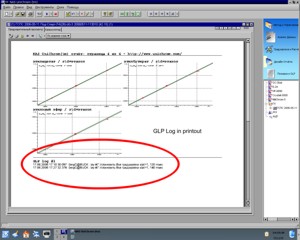
Environmentas before The report generator page with 4 calibrations and GLP log |
|||||||||||||||
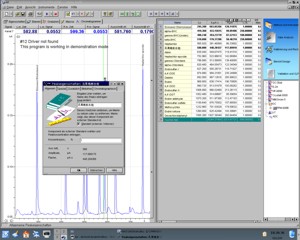
Environmentas before The German version. Finally our resource translator is working with Kylix-generated resources. devhost$ LANG=de_DE ./ulnx |
|||||||||||||||
Next StepQtClx shows completely unusable behaviour. Three layers of wrappers around GUI = VisualCLX + QtClx + Qt + XWindows work not as good as expected. Due to significant increase of functionality level in Lazarus CCR project and Free Pascal Compiler it was decided to move the UniChrom to Lazarus land. The prototype of application is built under 32-bit windows and 64-bit linux without modification of source code. Lazarus motto - "write once - compile everywhere" somehow works.
The prototype applications works on amd64 Debian GNU/Linux 4.0. | |||||||||||||||
November 2008, Next step
Seems to be all is OK with peak names. Waiting GTK2 widgetset to come from beta stage. February 2009, get ready for the future
Reporting seems to work OK. Lazarus CUPS printing implementation is wrong. In TODO list. June 2009, moving forward
August 2009, Summer is Over
Localization engine is in progress. Sample report (in russian only) generated to CUPS-PDF. April 2013, OpenGL for LC/UV data visualization
5-wavelength chromatogram + spectra from Agilent/HP HPLC example. DAD A, Sig=230,4 Ref=750,20 Shown the spectra matrix. Color corresponds to wavelength range. |
|||||||||||||||
December 2013, Moving to new location - far from city centerYou would laugh - but this is MacOS/X 10.5 running UniChrom which is talking to Agilent 7890 emulator. Indeed it works. Work environment: Virtualbox running MacOS/X 10.5 (hackintosh) UniChrom 5.1 beta (i386-carbon) |
|||||||||||||||
